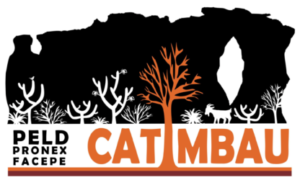15. Oliveira et al., 2023 – Cenostigma microphyllum seedlings in semiarid region grow faster under arbuscular mycorrhizal symbiosis, regardless of water availability
14. Cavalcanti & Astúa 2023 Coat color in Thylamys karimii (Petter, 1968) (Didelphimorphia, Didelphidae) in northeastern Brazil: intraspecific variation and geographic distribution
13. Bezerra et al. 2023 Habemus seeds but they are non-viable: The importance of assessing seed viability in seed rain
12. Araújo et al. 2023 Human disturbance is the major driver of vegetation changes in the Caatinga dry forest region
11. Kulka et al. 2023 Chronic anthropogenic disturbance alters litter decomposition and nutrient concentrations and stocks across a Caatinga dry forest chronosequence
10. Oliveira et al 2023 Divergent effects of leaf-cutting ant herbivory and soil engineering on the reproductive success of plants in a Caatinga dry forest
9. Almeida et al 2023 Notes on the diet and reproduction of Dryophylax phoenix in the Catimbau National Park, Pernambuco State, Brazil
8. Melo et al 2023 Resilient fruit‑feeding butterfly assemblages across a Caatinga dry forest chronosequence submitted to chronic anthropogenic disturbance. Journal of Insect Conservation
7. Silva et al 2023 Reproductive functional organization of woody plant assemblages along regeneration in a Caatinga dry forest. Forest Ecology and Management
6. Oliveira et al 2023 Leaf-cutting ant nests support less dense and impoverished seed assemblages in a human-modified Caatinga dry forest. Biotropica
5. Bezerra et al 2023 Negative impact of slash-and-burn agriculture on the seed rain in a tropical dry forest. Forest Ecology and Management
4. De Paula et al 2023 The role of seed rain and soil seed bank in the regeneration of a Caatinga dry forest following slash-and-burn agriculture. Journal Arid Environments
3. Noutcheu et al 2023 Coppicing as a driver of plant resprouting and the regeneration of a Caatinga dry forest. Forest Ecology and Management
2. Bezerra-Silva et al 2023 Comparative nectar dynamics in four ornithophilous Melocactus (Cactaceae) species in a seasonally dry tropical forest. Plant Species Biology
